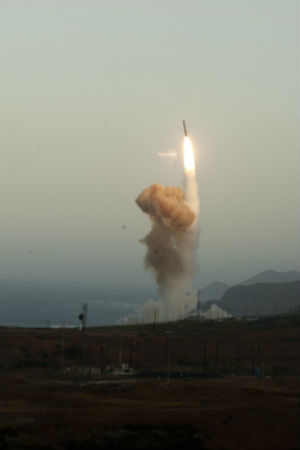 Investments in the Air Force’s part of the nuclear triad are going to get closer scrutiny as the service grapples with ways to prioritize post-sequestration budgets, USAF’s top uniform official in charge of nuclear deterrence operations told the Daily Report. “We will have to make some tough choices (in the coming years),” said Maj. Gen. Garrett Harencak, assistant chief of staff for strategic deterrence and nuclear integration. “The (Department of Defense) and our Air Force (are) going to have to come to grips with the fact that we are living in 2014 and not 1974.” Operations, sustainment, and training for NDO will change, he noted. “I’m not saying we’re going to be able to recapitalize everything we want… we are going to have to be very careful,” he said. Harencak noted USAF’s analysis of alternatives for the Minuteman III follow-on system, started in 2013 and slated for completion by the end of this fiscal year, will have a large impact on the service’s nuclear operations. The Air Force will have to be “darn sure” any sustainment of its ICBM force—from propulsion to guidance systems—will be transferrable to the Minuteman III’s successor. The current fleet is slated for operations through 2030, meaning USAF will have to ensure it remains safe, secure, and effective for years to come, he added.
Investments in the Air Force’s part of the nuclear triad are going to get closer scrutiny as the service grapples with ways to prioritize post-sequestration budgets, USAF’s top uniform official in charge of nuclear deterrence operations told the Daily Report. “We will have to make some tough choices (in the coming years),” said Maj. Gen. Garrett Harencak, assistant chief of staff for strategic deterrence and nuclear integration. “The (Department of Defense) and our Air Force (are) going to have to come to grips with the fact that we are living in 2014 and not 1974.” Operations, sustainment, and training for NDO will change, he noted. “I’m not saying we’re going to be able to recapitalize everything we want… we are going to have to be very careful,” he said. Harencak noted USAF’s analysis of alternatives for the Minuteman III follow-on system, started in 2013 and slated for completion by the end of this fiscal year, will have a large impact on the service’s nuclear operations. The Air Force will have to be “darn sure” any sustainment of its ICBM force—from propulsion to guidance systems—will be transferrable to the Minuteman III’s successor. The current fleet is slated for operations through 2030, meaning USAF will have to ensure it remains safe, secure, and effective for years to come, he added.
Trainees in Basic Military Training and technical school no longer have the option to try alternate PT drills if they fail an initial assessment, according to a policy change the Air Force made in April. The move is part of a larger shift out of the classroom and into hands-on,…